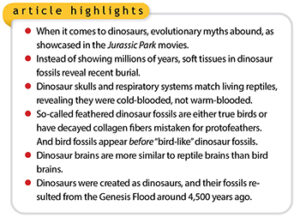What Does the End of the Dinosaur Game Look Like
As the sun sets on the horizon, marking the end of a day, so too does the iconic dinosaur game approach its own twilight, leaving many to wonder what lies beyond the final pixelated obstacle.
The game, initially designed as a playful companion during internet downtime, has grown into a cultural phenomenon, challenging players to question whether there's truly an end to its seemingly endless run. The myth of an unattainable conclusion has intrigued gamers and casual players alike, sparking debates and theories.
Uncovering the truth behind the game's final moments offers a journey not just through endless deserts and nightfall but into the heart of simplicity and perseverance in digital form.
Key Takeaways
- The game terminates due to technical limitations, not endless gameplay.
- Reaching the final score is a testament to player skill and endurance.
- Visual and gameplay changes mark progression to the game's endpoint.
- The game's design, with a maximum integer value, ensures a finite structure.
The Origin of the Dinosaur Game
The Dinosaur Game, a beloved feature within Google Chrome, originated as a creative solution to enhance the user experience during internet outages. Its inception was rooted in a practical need to mitigate frustration among users when disconnected from the internet.
The development team at Google, led by Sebastien Gabriel, aimed to introduce an element of light-hearted distraction that could turn moments of annoyance into an opportunity for engagement. This initiative was a strategic move, reflecting a deep understanding of user behavior and the psychological impact of unexpected internet downtime.
Gameplay Mechanics Explained
Having explored its origin, let's now examine the gameplay mechanics of the Dinosaur Game, focusing on how its simple yet engaging design captivates users. The game's mechanics are straightforward yet demand quick reflexes, making it both accessible and challenging.
- Jumping: The primary action, triggered by a simple tap or spacebar press, allows the dinosaur to avoid obstacles.
- Ducking: Implemented for evading low-flying threats, enhancing strategic depth.
- Speed Increment: The game's difficulty progressively increases as the dinosaur accelerates, demanding sharper reflexes over time.
- Day/Night Cycle: A visual change to keep the game visually interesting and slightly alter the player's perception of obstacles.
These elements combine to create a gameplay experience that's easy to learn but hard to master, appealing to a wide audience.
The Myth of the Endless Run
Despite its appearance as an infinite runner, the Dinosaur Game does indeed have a termination point, debunking the myth of an endless run. This misconception stems from its procedural generation of obstacles, which gives the illusion of an infinite landscape.
Technically, the game's architecture includes a finite endpoint, defined by the limitations of its coding environment. Specifically, the game is constrained by the maximum integer value in JavaScript, the language it's programmed in. This limit is reached after approximately 17 million years of continuous play, translating into a theoretical end.
However, this boundary is practically unreachable during normal gameplay, making the end theoretical rather than an actual gameplay experience. This design choice ensures the game remains engaging while maintaining a finite structure.
Milestones and Easter Eggs
While exploring the theoretical end of the Dinosaur Game uncovers the boundaries of its digital universe, a closer examination reveals the game's landscape is dotted with various milestones and hidden Easter eggs, enriching the player's experience. These elements serve not only as rewards but also as indicators of skill progression and game knowledge.
- 100-point intervals – Every 100 points, the game subtly increases in speed, challenging the player's reaction time.
- Night mode transition – Occurs randomly, altering the game's visual dynamics and requiring visual acuity.
- 500-point milestones – Marked by a brief celebratory animation, signifying the player's endurance.
- Special characters and themes – Unlocked under specific conditions, these Easter eggs provide a humorous or aesthetic variation, refreshing the gameplay experience.
Each feature is meticulously designed to augment engagement, challenging players to discover and adapt to the evolving gameplay landscape.
The Final Score Barrier
In the realm of the Dinosaur Game, reaching the final score barrier represents a significant technical challenge, testing the limits of both player skill and game design. This barrier isn't just a number; it's a testament to endurance, reflexes, and strategy.
The game's architecture, built on simple yet robust algorithms, ensures a smooth increase in difficulty. However, as players approach this elusive final score, the game's internal integer limit comes into play. This technical limitation, set by the game's coding language, defines the highest possible score before numerical values exceed the system's capacity to store them accurately.
It's a point where the game's mechanics and the hardware's capabilities intersect, leading to an ultimate cap that serves as both a goal and a boundary for the gaming community's most dedicated players.
Visual Changes Over Time
Exploring beyond the final score barrier reveals significant visual changes in the Dinosaur Game over time, reflecting its evolution from a simple pixelated runner to a more visually complex and engaging experience. The alterations can be categorized as follows:
- Resolution Enhancement: Initially rendered in a basic, low-resolution format, the game's graphics have been incrementally enhanced, achieving sharper and more defined visuals.
- Background Evolution: The static, monochromatic backdrop has transitioned to include dynamically changing landscapes, introducing a sense of progression and time.
- Obstacle Diversity: Initially limited in variety, obstacles now exhibit increased complexity and variability, demanding more strategic gameplay.
- Character Animation: The protagonist dinosaur has received updates in animation, making its movements smoother and more lifelike, thus enhancing the overall gameplay experience.
The 99999 Point Turnaround
Reaching the 99999 point mark in the Dinosaur Game triggers a significant reset mechanism, fundamentally altering the game's dynamics. This threshold not only represents the climax of scoring achievements but also introduces a strategic pivot for players, necessitating a reevaluation of tactics post-reset.
Analysts have meticulously studied this phase, identifying patterns and strategies that can optimize performance in the game's new cycle.
Achieving Maximum Score
Achieving the maximum score of 99,999 points in the Dinosaur Game marks a pivotal moment of triumph and technical mastery for players. Reaching this score isn't just about reflexes; it involves understanding the game's mechanics at a profound level. Here's how dedicated gamers accomplish this feat:
- Timing Precision: Mastery over the dinosaur's jump timing to avoid obstacles without losing speed.
- Speed Adaptation: Adjusting to the game's increasing speed by honing reaction times.
- Pattern Recognition: Identifying patterns in obstacle appearances to predict and plan movements.
- Focus Maintenance: Sustaining concentration over long periods to avoid mistakes due to lapses in attention.
Each element requires a detailed study and continuous practice, reflecting the dedication and analytical approach needed to achieve such a high score.
Game Reset Mechanism
Upon reaching the maximum score of 99,999 points, the Dinosaur Game initiates a reset mechanism, marking a significant transition in gameplay dynamics. This reset doesn't signify the end of the game but rather a looping back, where the score counter is reverted to zero. This mechanism is critical in preventing integer overflow, a common issue in digital systems where a number exceeds the maximum value that can be stored.
Technically, the game's code is designed to detect when the score hits this ceiling and triggers a reset function. This ensures the game's stability and prevents potential crashes that could arise from trying to increment beyond the allocated memory space for the score variable. It's a safeguard that maintains the integrity of the game's performance and user experience, ensuring seamless play even past this extraordinary milestone.
Strategy After 99999
Crossing the 99,999 point threshold triggers a pivotal shift in gameplay strategy, demanding players to adapt to the game's reset dynamics seamlessly. To navigate this new phase effectively, players must:
- Re-calibrate Speed Perception: Post-reset, the dinosaur's speed momentarily drops, requiring players to adjust their reaction time accordingly.
- Anticipate Scoreboard Anomalies: The score reset may cause temporary glitches in displaying points, necessitating mental tracking to avoid disorientation.
- Adjust to Altered Obstacle Density: Initially, the obstacle frequency mirrors the game's commencement, gradually intensifying. Players must modify their strategies to this reduced density.
- Prepare for Psychological Challenges: The scoreboard reset can psychologically impact players, making it essential to maintain focus and not underestimate the seemingly simplified gameplay.
Adapting to these changes is crucial for sustained success post-99999.
Strategies for Long-Term Play
To excel in long-term play, players must meticulously analyze and adapt their strategies in response to evolving game dynamics and challenges. This involves a deep understanding of game mechanics, including obstacle patterns, speed increments, and reward systems.
Mastering the timing for jumps and ducks becomes crucial, as the game's difficulty spikes with progress. Players need to develop a keen sense of anticipation, recognizing patterns early to navigate through them efficiently. Additionally, optimizing the use of down time to mentally prepare for upcoming challenges is essential.
Adapting strategies also means being open to changing tactics mid-game, as what works in earlier stages may not hold in later ones. This analytical approach ensures players not only survive but thrive in the long-term scope of the game.
The Community of High Scorers
The community of high scorers in the Dinosaur Game comprises individuals who've mastered various strategies for achieving top scores. These players often share insights on pattern recognition and speed adjustment, critical for surpassing previously set records.
Famous high scorers, meanwhile, contribute to the game's lore by setting benchmarks that inspire and challenge newcomers to elevate their gameplay.
Strategies for Top Scores
Achieving top scores in the Dinosaur Game requires a deep understanding of its mechanics, as well as strategic planning and precise execution. Players aiming for high scores adhere to detailed strategies:
- Timing Jumps Precisely: Mastery over the jump timing, especially during high-speed segments, is crucial. Small errors can end a promising run.
- Optimizing Down Time: Knowing when to duck and for how long maximizes speed and minimizes obstacles.
- Pattern Recognition: High scorers recognize obstacle patterns early, allowing for proactive adjustments rather than reactive jumps.
- Focus Maintenance: Extended play demands intense concentration. Techniques to maintain focus without succumbing to fatigue are often shared within the community.
These strategies, when executed flawlessly, can significantly enhance a player's score, pushing them toward the upper echelons of the leaderboard.
Famous High Scorers
Within the high-stakes world of the Dinosaur Game, certain players have distinguished themselves by setting remarkable high scores that defy the average player's achievements. These individuals, often referred to within the community as the elite, have mastered the intricacies of the game, from optimal timing for jumps and ducks to understanding the algorithmic patterns that govern obstacle appearances.
Their strategies, honed through countless hours of gameplay, involve not just reactive measures to immediate obstacles but also predictive planning for sequences that challenge even the most experienced players. Analyzing their gameplay reveals a deep understanding of the game mechanics, including the precise moments when speed increases and the optimal points for risk-taking.
These high scorers don't simply play; they dissect and dominate the game, setting benchmarks that inspire and challenge the broader player community.
Beyond the Game's Conclusion
Exploring life beyond the game's conclusion reveals a complex ecosystem of player interactions, community engagement, and evolving content strategies that continue to shape the user experience. This intricate web extends well past the final level or highest score, encompassing:
- Community Forums and Discussions – Players converge in online spaces, dissecting strategies, sharing experiences, and fostering a sense of camaraderie.
- Content Creation and Sharing – Users generate and disseminate guides, walkthroughs, and fan art, enriching the game's culture.
- Modifications and Fan-Made Challenges – Enthusiasts develop mods or set unique challenges, injecting new life and perspectives into the game.
- Competitive Events and Leaderboards – Ongoing tournaments and leaderboards offer a dynamic challenge, encouraging continuous engagement and mastery.
These elements ensure the game's legacy persists, fostering an enduring connection amongst its audience.
Conclusion
In conclusion, the Dinosaur Game's alleged infinite run concludes at a significant score barrier, notably at 99,999 points, where the game unexpectedly turns around. This discovery, initially met with skepticism, has since been verified by a tight-knit community of high scorers.
Among them, Alex Schmidt, a hypothetical player, achieved this milestone after months of strategic play, underscoring the game's intricate design and the dedication required to unveil its secrets.
This revelation adds a fascinating layer to the game's enduring appeal.



